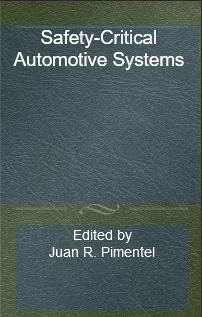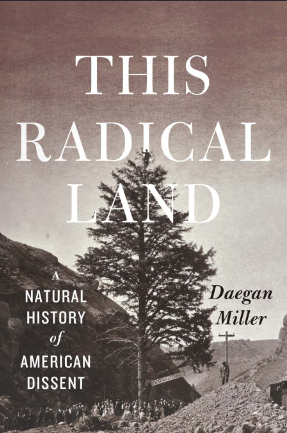موضوعات
آموزش و پرورش
ادبیات و زبان
پزشکی، دندانپزشکی و داروسازی
تاریخ و جغرافیا
داستان و رمان
دیگر
دین و فلسفه
روانشناسی
ریاضیات و آمار
سلامتی، تناسب اندام و رژیم غذایی
شیمی و پلیمر
علوم اجتماعی و حقوق
علوم زیستی و بیوتکنولوژی
فیزیک و نجوم
کامپیوتر و اینترنت
کتابهای کودکان و داستان
کسب و کار و اقتصاد
کشاورزی و دامپزشکی و غذا
معماری
مهندسی و فناوری
هنر و تئاتر
محصولات
We are proud boys - Epub + Converted PDF
نویسندگان: خلاصه: It was late in March 2016, in the heat of Trump’s presidential push, and the national media had latched onto one bit of security footage from a Trump event. The video showed Trump’s campaign manager, Corey Lewandowski, grabbing and pushing Breitbart writer Michelle Fields as she approached Trump and tapped his elbow. Fields claimed that Lewandowski left bruises on her arm. It was enough that police charged Lewandowski with simple battery, but prosecutors ultimately dropped the case. He shrugged off the allegation and the news cycle that followed, which left the pundits to bicker among themselves over the footage and decide whether an assault had occurred. McInnes, staring slack-jawed at the footage during an episode of his reactionary talk show, couldn’t believe it warranted media attention in the first place. A woman touched a presidential candidate and got what was coming to her, he argued. If anything, she deserved more. “She wasn’t randomly grabbed!” he groused, his voice pitching upward in aggravation as the video played. “I think there’s not enough violence in today’s day and age.” McInnes then launched into one of his signature rants, steering the conversation toward his keynote: America had gone soft in the waning years of Barack Obama’s presidency, and there was no better evidence than the news media clutching its pearls over a woman being grabbed and pushed out of the way. Real Americans—real men—wouldn’t give this story the time of day. Real men are hardened by a lifetime of violenceSafety-Critical Automotive Systems - PDF
نویسندگان: خلاصه: Preface The subject of safety-critical automotive systems is growing in importance, as one can see by perusing the latest publications of SAE International. Safety has become an integral and essential part behind the engineering process for the modern vehicle. Vehicle safety is a wide-ranging discipline covering many engineering activities spanning materials, ergonomics, environmental, functional, and so forth. This book covers functional safety, also referred to as system safety. Functional (or system) safety refers to aspects of the overall safety of a vehicle that rely on the vehicle sub-systems producing correct outputs or operating correctly in response to stimuli. The most important vehicle sub-systems are the following: 1. Sensors 2. Actuators 3. Electronic control units (ECUs) 4. Communication systems 5. Software (e.g., application, middleware, drivers) Thus, it is timely that a book covering the most important aspects of functional (i.e., system) safety-critical automotive systems is published. The goals of this book are threefold: 1. To provide a quick introduction to and summary of the subject 2. To provide a classification and analysis of the recent literature on the subject 3. To reproduce the most representative of SAE publications on the subject The task of assembling a book on safety-critical automotive systems is challenging because the subject is complex, involving several technical areas that have contributed to the existing body of knowledge. In addition, the subject is by no means mature. There will be many excellent contributions and publications in the years to come. There are also many good publications in a number of worldwide conferences and/or journals. However, the intent of this book was to consider only SAE publications. Nevertheless, many of the SAE papers in this book include references to other publications. After selecting a number of papers, the question arose as to what criteria should be used to classify these papers. One possible criterion was to organize the papers around the constituent elements of a system (e.g., sensors, actuators, ECUs, communication system, software). Another criterion was to organize the papers along the steps to be followed while building a complete final system. We have decided to use the second criterion. Accordingly, the papers are organized in the following sections: 1. Introduction to safety-critical automotive systems 2. Safety processes to be followed 3. Requirements to be met 4. Analysis and design methods and techniques 5. Prototyping and target implementation 6. Testing, verification, and validation methTHIS RADICAL LAND - PDF
نویسندگان: خلاصه: Then the coal company came with the world’s largest shovel, And they tortured the timber, and stripped all the land. Well, they dug for their coal till the land was forsaken, And they wrote it all down as the progress of man. John Prine, “Paradise”1 What happens when the past’s oldest witness comes crashing down dead? A new day will dawn . . . but over what? Where are we, who are we, when the bough breaks? Bostonians opened their eyes on a Wednesday morning in 1876 to opaque February skies bleakly blanketing a city made suddenly strange. At 7 p.m. the evening before, the enormous Great Elm on the famous Boston Common had been toppled by a hard wind.2 Of course, trees fall all the time with never a thought spared them, but the Great Elm was dif- ferent. It was famous in the nineteenth-century as an emissary from the past, and it appears ubiquitously in prose, poem, and print, a people’s treasured heirloom, believed to be among the last living witnesses to the young nation’s milestones; its loss was disorienting. Paul Revere, on his 1775 midnight ride, was rumored to have passed by the treeOET Occupational Therapy_ Official OET Practice Book 1 - PDF
نویسندگان: خلاصه: OET is an international English language test that assesses the language proficiency of healthcare professionals seeking to register and practise in an English-speaking environment. It provides a validated, reliable assessment of all four language skills – listening, reading, writing and speaking – with the emphasis on communication in healthcare professional settings. OET tests candidates from the following 12 health professions: Dentistry, Dietetics, Medicine, Nursing, Occupational Therapy, Optometry, Pharmacy, Physiotherapy, Podiatry, Radiography, Speech Pathology and Veterinary Science. Candidates are encouraged to prepare thoroughly for their OET test. Language proficiency and test taking skills For more information about OET including the latest test dates and a complete list of test locations and preparation providers, as well as access to our free test preparation package Start for Success, visit the OET website: www.occupationalenglishtest.org About the test OET assesses listening, reading, writing and speaking. There is a separate sub-test for each skill area. The Listening and Reading sub-tests are designed to assess the ability to understand spoken and written English in contexts related to general health and medicine. The sub-tests for Listening and Reading are common to all professions. The Writing and Speaking sub-tests are specific to each profession and are designed to assess the ability to use English appropriately in the relevant professional context.OET Physiotherapy_ Official OET Practice Book 1 - PDF
نویسندگان: خلاصه: OET is an international English language test that assesses the language proficiency of healthcare professionals seeking to register and practise in an English-speaking environment. It provides a validated, reliable assessment of all four language skills – listening, reading, writing and speaking – with the emphasis on communication in healthcare professional settings. OET tests candidates from the following 12 health professions: Dentistry, Dietetics, Medicine, Nursing, Occupational Therapy, Optometry, Pharmacy, Physiotherapy, Podiatry, Radiography, Speech Pathology and Veterinary Science. Candidates are encouraged to prepare thoroughly for their OET test. Language proficiency and test taking skills For more information about OET including the latest test dates and a complete list of test locations and preparation providers, as well as access to our free test preparation package Start for Success, visit the OET website: www.occupationalenglishtest.org About the test OET assesses listening, reading, writing and speaking. There is a separate sub-test for each skill area. The Listening and Reading sub-tests are designed to assess the ability to understand spoken and written English in contexts related to general health and medicine. The sub-tests for Listening and Reading are common to all professions. The Writing and Speaking sub-tests are specific to each profession and are designed to assess the ability to use English appropriately in the relevant professional context.OET Veterinary Science_ Official OET Practice Book - Original PDF
نویسندگان: خلاصه: OET is an international English language test that assesses the language proficiency of healthcare professionals seeking to register and practise in an English-speaking environment. It provides a validated, reliable assessment of all four language skills – listening, reading, writing and speaking – with the emphasis on communication in healthcare professional settings. OET tests candidates from the following 12 health professions: Dentistry, Dietetics, Medicine, Nursing, Occupational Therapy, Optometry, Pharmacy, Physiotherapy, Podiatry, Radiography, Speech Pathology and Veterinary Science. Candidates are encouraged to prepare thoroughly for their OET test. Language proficiency and test taking skills For more information about OET including the latest test dates and a complete list of test locations and preparation providers, as well as access to our free test preparation package Start for Success, visit the OET website: www.occupationalenglishtest.org About the test OET assesses listening, reading, writing and speaking. There is a separate sub-test for each skill area. The Listening and Reading sub-tests are designed to assess the ability to understand spoken and written English in contexts related to general health and medicine. The sub-tests for Listening and Reading are common to all professions. The Writing and Speaking sub-tests are specific to each profession and are designed to assess the ability to use English appropriately in the relevant professional contextOET Optometry_ Official OET Practice Book 1_ For tests from 31 August 2019_nodrm - PDF
نویسندگان: خلاصه: OET is an international English language test that assesses the language proficiency of healthcare professionals seeking to register and practise in an English-speaking environment. It provides a validated, reliable assessment of all four language skills – listening, reading, writing and speaking – with the emphasis on communication in healthcare professional settings. OET tests candidates from the following 12 health professions: Dentistry, Dietetics, Medicine, Nursing, Occupational Therapy, Optometry, Pharmacy, Physiotherapy, Podiatry, Radiography, Speech Pathology and Veterinary Science. Candidates are encouraged to prepare thoroughly for their OET test. Language proficiency and test taking skills For more information about OET including the latest test dates and a complete list of test locations and preparation providers, as well as access to our free test preparation package Start for Success, visit the OET website: www.occupationalenglishtest.org About the test OET assesses listening, reading, writing and speaking. There is a separate sub-test for each skill area. The Listening and Reading sub-tests are designed to assess the ability to understand spoken and written English in contexts related to general health and medicine. The sub-tests for Listening and Reading are common to all professions. The Writing and Speaking sub-tests are specific to each profession and are designed to assess the ability to use English appropriately in the relevant professional cOET Dietetics_ Official OET Practice Book 1_ For tests from 31 August 2019_nodrm - PDF
نویسندگان: خلاصه: OET is an international English language test that assesses the language proficiency of healthcare professionals seeking to register and practise in an English-speaking environment. It provides a validated, reliable assessment of all four language skills – listening, reading, writing and speaking – with the emphasis on communication in healthcare professional settings. OET tests candidates from the following 12 health professions: Dentistry, Dietetics, Medicine, Nursing, Occupational Therapy, Optometry, Pharmacy, Physiotherapy, Podiatry, Radiography, Speech Pathology and Veterinary Science. Candidates are encouraged to prepare thoroughly for their OET test. Language proficiency and test taking skills For more information about OET including the latest test dates and a complete list of test locations and preparation providers, as well as access to our free test preparation package Start for Success, visit the OET website: www.occupationalenglishtest.org About the test OET assesses listening, reading, writing and speaking. There is a separate sub-test for each skill area. The Listening and Reading sub-tests are designed to assess the ability to understand spoken and written English in contexts related to general health and medicine. The sub-tests for Listening and Reading are common to all professions. The Writing and Speaking sub-tests are specific to each profession and are designed to assess the ability to use English appropriately in the relevant professional cOET Podiatry: Official OET Practice Book 1 - Original PDF
نویسندگان: خلاصه: For tests up to and including 3 August 2019.From the makers of OET.Test and build your English skills with this official OET Podiatry resource. Each Practice Test Book includes:•Three OET practice tests with answer keys•An overview of OET and how the test is scored•The Test-Taker’s Information Guide•Key assessment criteria•Useful language information.Please note that you will not be able to print out the sample tests that are in the book. If you wish to be able write on the tests, we recommend that you purchase the print book. ***Want to buy both print and kindle versions?***Buy the print book from Amazon.com and you will be given the option to purchase the kindle book at a heavily discounted price.ennessee Williams, T-shirt Modernism and the Refashionings of Theater (Anthem Studies in Theatre and Performance) - Original PDF
نویسندگان: خلاصه: Tennessee Williams, T-shirt Modernism and the Refashionings of Theater reappraises the received wisdom that Williams’s work fell into decline in the late 1960 as the Naturalism he was associated with, not always through his own choice, was replaced by European theatrical experimentalism and as culture saw a lifting of sexual restrictions. It suggests, instead, that Williams was always experimental, always more Chekhov than Ibsen, a lyrical playwright inflected with the poetry of Harte Crane, and that his late plays are as central to Williams’s reshaping of American theater as those works of the immediate post–World War II era that brought him fame and fortune. Its general aim, then, is to engage the perception that “Tennessee Williams is the greatest unknown playwright America has produced” (David Savran, City University of New York). In many respects the work of Tennessee Williams, after a protracted period of neglect, is primed for reappraisal , reinterpretations and, subsequently, re-stagings. This work is part of that process, academically at very least, but performatively as well as academic reinterest often regenerates theatrical reinterest. Read lessآیا کتاب مورد نظر هنوز بر روی سایت قرار نگرفته است؟ جای نگرانی نیست! کافی است بر روی گزینه سفارش کتاب کلیک کرده و درخواست خود را ثبت کنید. در کمتر از چند ساعت کتاب شما را آماده خواهیم کرد.









